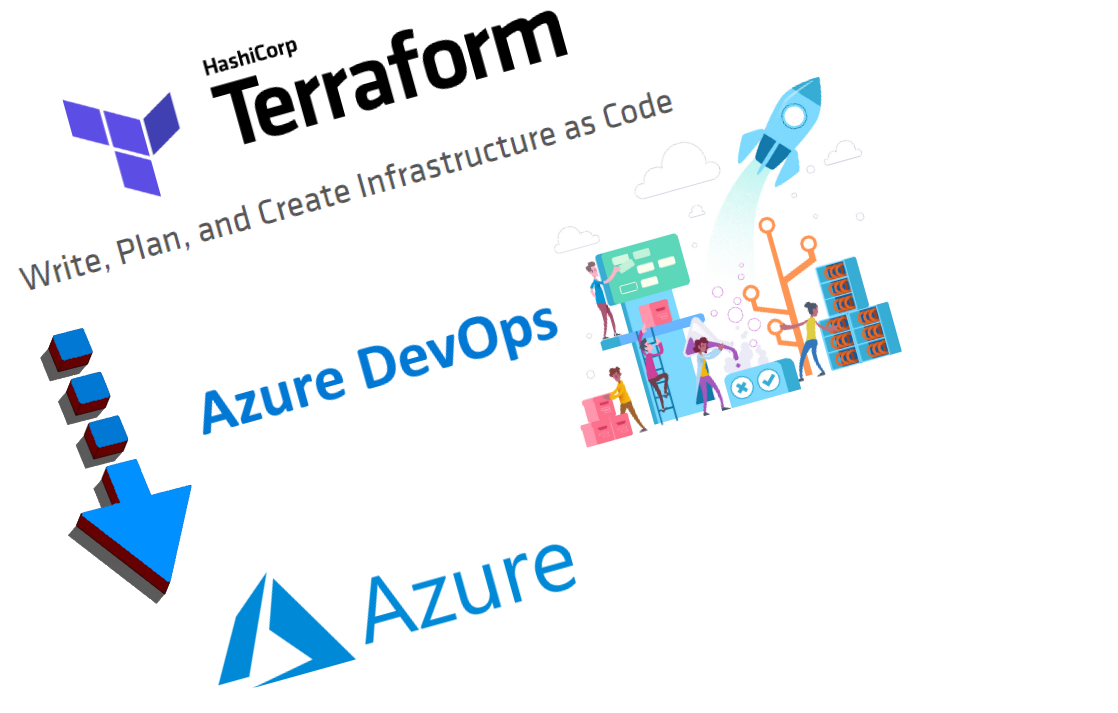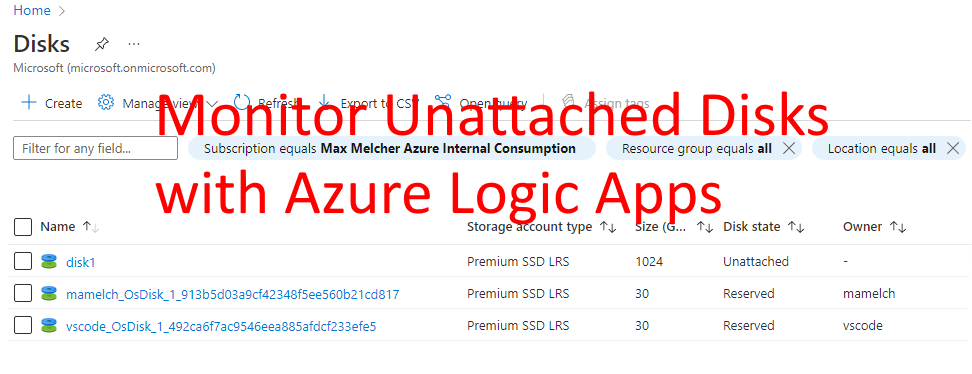
Using Terraform is easy - but benefiting of it in a team with governance and approvals? Not so much.
In this post, I show you how I set things up to have solid, repeatable deployments with Terraform and Azure DevOps.
Todo:
- Staging Concept
- Approvals
- Repeatable Deployments
- Naming Convention
Governance and Infrastructure as Code
My governance requirements are the following:
- Automation: Automate as much as possible. Every change should be checked in, documented and executed accordingly. “Everything as code”.
- Multiple Subscriptions and Resource Groups: Organize everything in subscriptions and resource groups.
- Resource Tags: Tag my resources (structure, criticality, cost management etc)
- Permission Assignments / Role Based Access Controls (RBAC): Assign permissions in a structured/governed way.
- Resource Locks: Prevent accidental deletion
- Naming Convention Enable/Enforce a consistent naming convention
- Documentation System should document itself. For the latest information/configuration I dont want to check the portal. The documentation must be searchable, too.
- Staging Support of multiple stages: DEV and PROD is fine. Having more environments for short periods should be easy to setup/destroy.
Those requirements are only the tip of the iceberg - there are many more implicit requirements, but covering them will be a great start.
Given all those Infrastructure as Code requirements, I use Terraform to tackle them.
Terraform
Terraform is the tool that amazed me the most last year - it’s so easy to provision and update infrastructure environments that I recommend it to everyone. Infrastructure as Code (IaC) to provision and manage small to large environments is definitely a must, it’s 2019!
This wont be an introductory post to terraform and Azure, there are already plenty of them. And the Azure docs are solid, too.
Instead, this post will focus on the Infrastructure as Code Governance topics in the context of Azure.
A huge template repository is available, we dont have to start from scratch.
If you use VS Code you should install this extension to get autocomplete and references - that speeds up the development a lot!
The provisioning part is covered and solid - how about the governance aspect? Rolling-out changes and have them in a structured, repeatable deployment process for multiple developers is a core requirements and I solved them with Azure DevOps.
Azure DevOps
Using Terraform in a team in a collaborative, secure and reproducible manner? Right, Azure DevOps can and should take care of our Terraform scripts. The good news are there is are pretty solid terraform build & release tasks available. So installation of the terraform executable is covered, same are the terraform commands for:
- init
- validate
- plan
- apply
That is a low hanging fruit here and covers a lot! The destroy command, as of now, is not implemented in this task. If you need it, then you can use one of the other available build tasks for Azure DevOps.
Next up, let’s check a basic deployment scenario.
Build and Release: Terraform Deployments
Once I push my Terraform scripts to Azure DevOps, a build is triggered to generate a plan. To demonstrate this, I simple checked in a small script that only provisions a resource group with a tag.
#create a resource group with the terraform name 'main'
resource "azurerm_resource_group" "main" {
name = "tf-resources"
location = "West Europe"
tags {
environment = "staging"
}
}’terraform plan’ then generates me execution plan that details what will be done when we ’terraform apply’ that script. So every addition, modification or deletion will be listed - how awesome is that?! Try to do that with PowerShell or ARM templates.
In the example above it would result in:
##[section]Starting: terraform plan
Refreshing Terraform state in-memory prior to plan...
The refreshed state will be used to calculate this plan, but will not be
persisted to local or remote state storage.
------------------------------------------------------------------------
An execution plan has been generated and is shown below.
Resource actions are indicated with the following symbols:
+ create
Terraform will perform the following actions:
+ azurerm_resource_group.main
id: <computed>
location: "westeurope"
name: "tf-resources"
tags.%: "1"
tags.environment: "staging"
Plan: 1 to add, 0 to change, 0 to destroy.
------------------------------------------------------------------------
Note: You didn't specify an "-out" parameter to save this plan, so Terraform
can't guarantee that exactly these actions will be performed if
"terraform apply" is subsequently run.So every line that starts with a + will be added to the subscription. Super helpful stuff!
Azure DevOps & Terraform
So this was all pretty basic terraform stuff (still awesome!) - but
The build
todo: overview todo: approval todo: output screenshot todo: error handling todo: release pipeline
queue:
name: Hosted VS2017
steps:
- task: charleszipp.azure-pipelines-tasks-terraform.azure-pipelines-tasks-terraform-installer.TerraformInstaller@0
displayName: 'Use Terraform 0.11.8'
- task: charleszipp.azure-pipelines-tasks-terraform.azure-pipelines-tasks-terraform-cli.TerraformCLI@0
displayName: 'terraform init'
inputs:
command: init
backendType: azurerm
backendServiceArm: 'Microsoft Azure Internal Consumption (36d3ff36-dc30-4224-9970-6c24b9043705)'
backendAzureRmResourceGroupName: terraform
backendAzureRmStorageAccountName: mmeterraform
backendAzureRmContainerName: staging
backendAzureRmKey: '<key>'
- task: charleszipp.azure-pipelines-tasks-terraform.azure-pipelines-tasks-terraform-cli.TerraformCLI@0
displayName: 'terraform plan'
inputs:
command: plan
environmentServiceName: '<subscription>'gives you the following:
Final words
todo: summary








Share this post
Twitter
Facebook
LinkedIn
Email